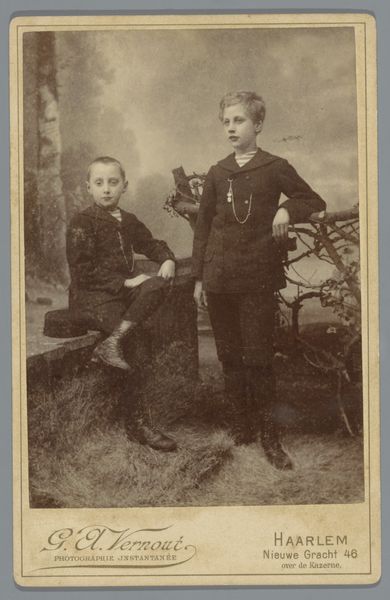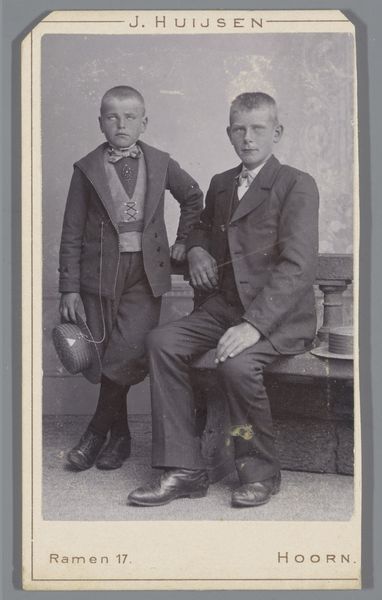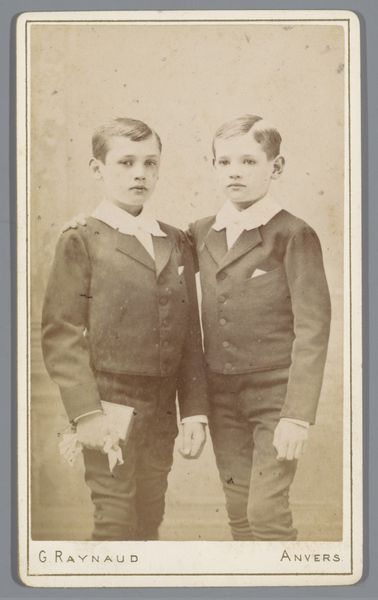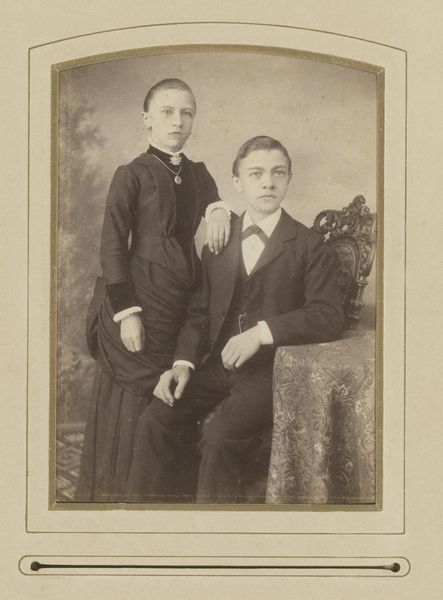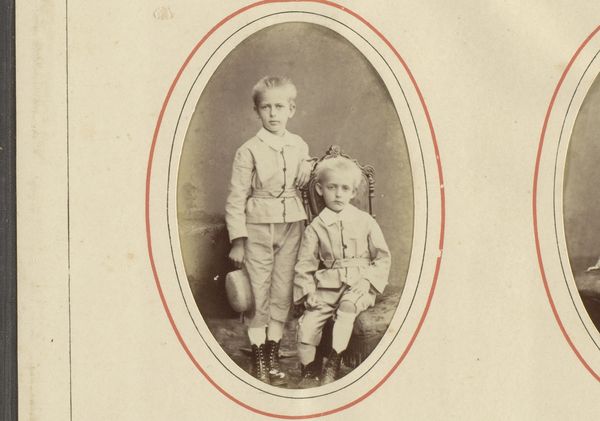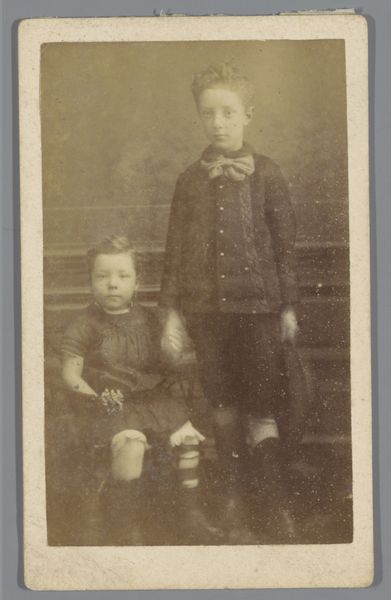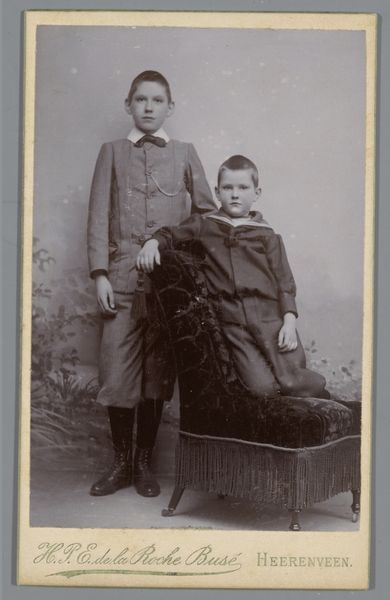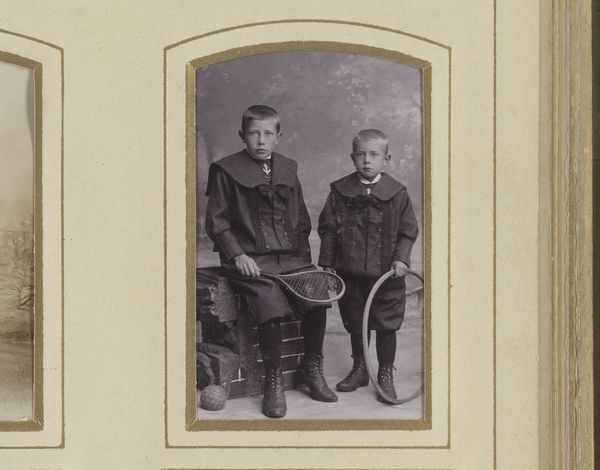
print, daguerreotype, photography
#
portrait
#
16_19th-century
# print
#
daguerreotype
#
photography
#
genre-painting
Dimensions: 14.4 × 10 cm (image/paper); 16.5 × 10.8 cm (card)
Copyright: Public Domain
Editor: So, here we have "Two Boys," a daguerreotype from between 1870 and 1899 by L. W. Felt, currently at the Art Institute of Chicago. It's quite a formal portrait, but there's something melancholic about it. How do you interpret the visual language in a piece like this? Curator: This image speaks to me of societal expectations, the weight of representation. Notice how the boys are posed, their serious expressions amplified by the stiff collars. This formality isn’t merely aesthetic; it reflects the Victorian era’s emphasis on decorum, even in childhood. The photograph becomes a symbol, doesn't it, of enforced maturity and constrained emotion? Editor: That's interesting, I hadn't thought of it that way. So, are you saying the way they are dressed and posed serves as a visual symbol of that constraint? Curator: Precisely! The image becomes a carefully constructed tableau representing a particular cultural moment. Consider the deliberate composition – the ornate table they lean on, the curtain backdrop. These elements aren't just for show; they contribute to a narrative of aspiration and respectability, embedding codes of conduct within the image. And those codes themselves communicate values and memories, wouldn't you say? Editor: Definitely! I guess I was focusing on their faces and missed the deeper symbolic layers. It’s amazing how much is communicated even in a seemingly simple portrait. Curator: It invites us to question: what did it mean to be a boy then? How did images like this shape the boys' understanding of themselves and their roles within society? A simple image, perhaps, but echoing the long shadows of its time. Editor: I hadn’t thought about the performance aspect before – how much they are acting the part in this image. Thanks, I will carry that reflection into the other portraits on display.
Comments
No comments
Be the first to comment and join the conversation on the ultimate creative platform.
